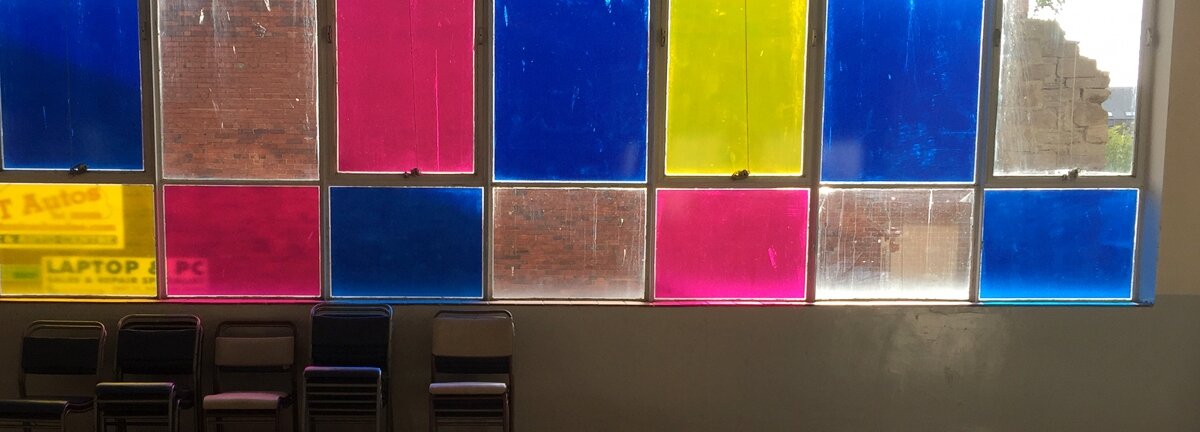Dispatches from the Dundee Design Festival: The business of design

With the design economy worth almost £72bn to the UK economy, the opportunities for business are vast. Stephen Miller reports back from the Dundee Design Festival, where both the Scottish government and businesses are realising the value of design.
Dundee is undergoing a design revolution. Hot on the heels of becoming the UK’s first UNESCO City of Design last year, the city has just hosted its inaugural design festival, revitalising the former DC Thomson Printworks into a temporary festival venue for four days of design exhibitions, talks and workshops. With the Kengo Kuma-designed V&A Dundee opening in 2018 too, it’s exciting times for design in the city.
Design is worth £4.8bn to the Scottish economy, providing 110,500, highly productive jobs.
The value of design to the Scottish Economy
I was there to talk about our recent design economy research and what it means for businesses and the economy in Scotland. Like many areas of the UK, Scotland is currently entrenched in a period of stagnating productivity levels. But design is one area of the Scottish economy which continues to go from strength to strength. Design is worth £4.8bn to the Scottish economy, providing 110,500, highly productive jobs. Scottish design workers produce an average annual output of £43,078, compared to a UK average of £33,667.
Yet there is still room for growth and development, with the majority of these jobs concentrated in just three sectors - digital design, architecture and the built environment and the multidisciplinary design sector (e.g. Fashion or industrial design), meaning more could be done to improve the use of design and the application of design thinking within Scottish businesses and public services. This was also acknowledged by Keith Brown MSP, Cabinet Secretary for the Economy, Jobs and Fair Work, who addressing the festival acknowledged “the need to help [creative] businesses create jobs and generate revenue to invest in [Scotland’s] future”.
Using design to transform businesses in Dundee
Organisations such as the V&A Dundee, Design in Action and of course, the Design Council, are all doing their bit to promote greater use of design amongst businesses and the public sector, but the most compelling cases are made by those who have already successfully done it. At the festival we heard from locally based businesses Gore and Scott and Fyfe. The latter presented an especially inspiring story of the impact design can have on a business.
The team at Scott and Fyfe were introduced to the Glasgow School of Art, who introduced them to design thinking. The company now uses this tool as its framework for developing and introducing all its new products.
Established in 1864, Scott and Fyfe have long designed and produced technical textiles for numerous markets. However for the last half of the twentieth century the company made the majority of its income by producing the paper used as underlay for carpets. The product sold incredibly well for a long time, and as Michaela Millar, Business Development Officer at the company highlighted in her presentation, this had led to a level of complacency in the business with regards to product development and innovation.
The onset of the recession changed all this. The company very quickly found its key markets in decline, and faced with the dilemma common to so many other SME’s, decided to turn to innovation and design thinking in particular. The team at Scott and Fyfe were introduced to the Glasgow School of Art, who introduced them to design thinking and the Double Diamond, first developed by Design Council. The company now uses this tool as its framework for developing and introducing all its new products.
In addition to using tools such as the Double Diamond, the company also made substantial changes to the way it works and where it works. They flattened the organisational hierarchy, and restructured teams to facilitate innovation, starting the process off with one small team who would meet around a table in the office to brainstorm ideas.
This has now evolved to include all teams, while they have also redesigned their physical office environment, providing more break-out spaces (or ‘Innovation pods’) and materials to aid the visualisation process. The impact of doing this was also confirmed by Claudia Nicholai from the School of Design Thinking at the Hasso Plattner Institute in Potsdam, whose recent research of 400 organisations found that one of the greatest impacts for businesses in implementing design thinking is improvements to the working culture (71% agreed). The relevance of this couldn’t be greater in an era of stagnating productivity.
In the space of a few years, the business has gone from being predominantly reliant on one or two products, to rapidly prototyping hundreds every year. This means they have increased their product range by 75% in the past five years.
For Scott and Fyfe, the transformation has been substantial. In the space of a few years, the business has gone from being predominantly reliant on one or two products, to rapidly prototyping hundreds every year. This means they have increased their product range by 75% in the past five years.
Examples such as this attest to the impact design can have on businesses. As the Scottish and UK governments look to boost productivity and rebalance the economy, our Design Economy research also suggests there is a major role for supporting the increased use of design across the country and across different sectors. We look forward to watching and supporting Dundee, Scotland and the rest of the UK as they embrace this opportunity.
Subscribe to our newsletter
Want to keep up with the latest from the Design Council?
